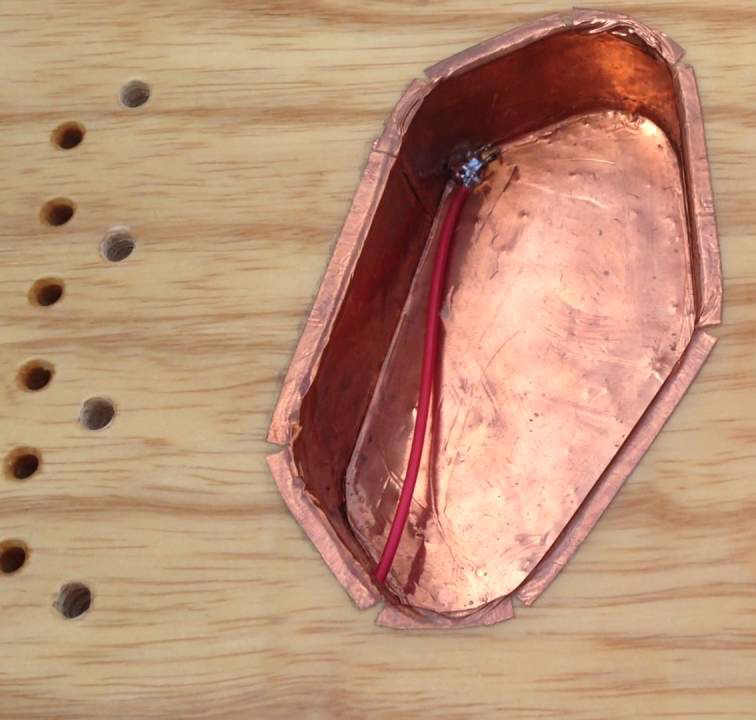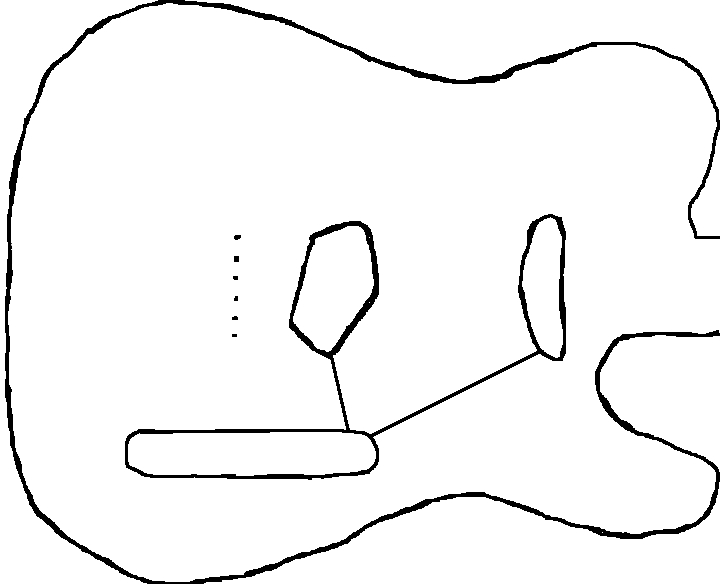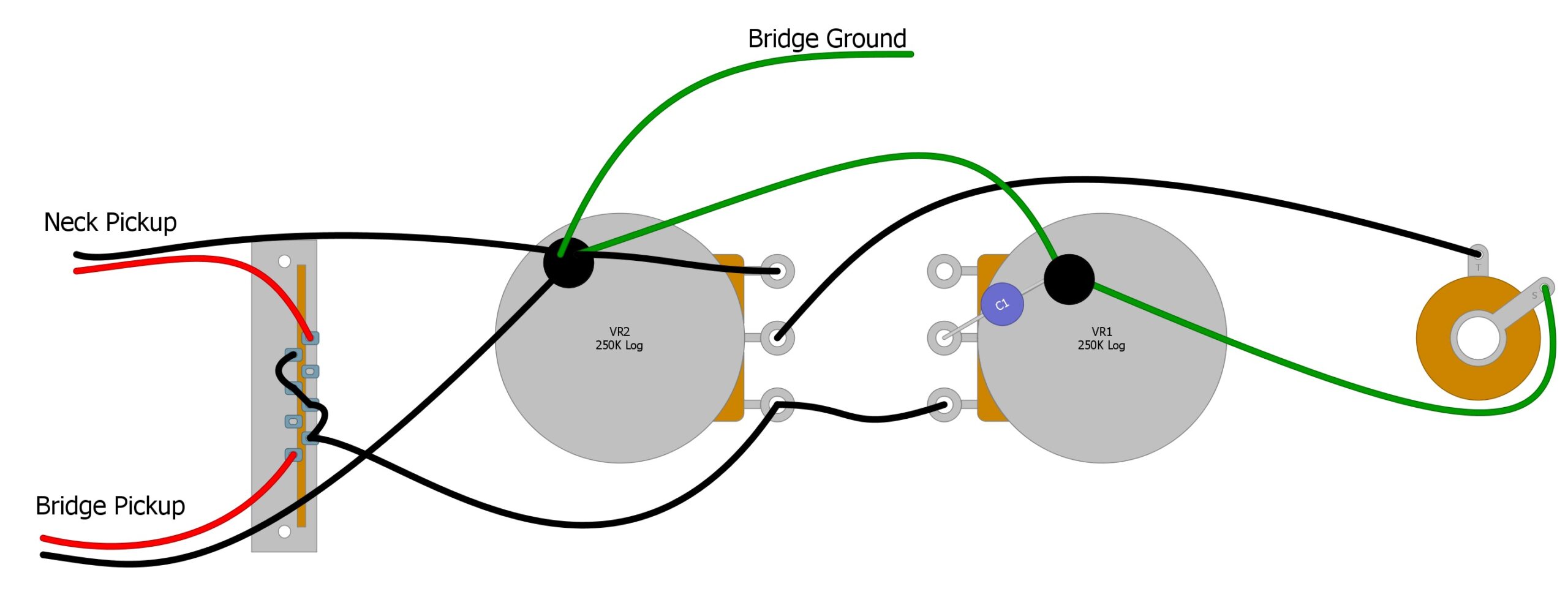
By Ed Malaker
Posted 12/11/2019
The Fender Telecaster is a legendary instrument, but it can become frustratingly noisy at times, leaving you frantically searching for a way to quiet it down. Noise gates can help keep the noise under control when you’re not playing, but when you hit a note, and the gate opens, the noise comes through. Here’s where we can help: we’ll show you how to add some shielding to your Tele, to protect it from the outside interference that causes the noise to occur. We’ll also explain proper telecaster shielding grounding.
Many people file guitar noise under “guitar grounding issues” but that’s not always the problem. Often, something in your environment is the source of the noise you’re hearing from the amplifier. While the noise may be coming from the power cable and/or something on the same circuit, it’s much more likely to be something that’s invading through the air.
RF Interference
RF stands for Radio Frequency. While your local radio station, airplane communications, and CB radio chatter may occasionally come through your amplifier, the radio frequencies we are most concerned with will have a much closer origin.
Anything with an electric motor, including microwaves, refrigerators, washers, dryers, fans, air conditioning, fluorescent lights, light dimmers, power transformers, and even automobile traffic will create RF interference.
If it spins, flips, flaps, clicks, vibrates, or anything resembling that, it’s probably creating radio waves and pumping them into the air. The same way it produces sound. Some of these waves can reach incredible distances. A single Fluorescent Coors Light bar sign can pump radio waves 200-ft or more. A single-coil guitar pickup is essentially an RF antenna.
Science Challenge
Try this test out. If you have an old AM/FM radio, or even a television that has the two screws on the back for an external antenna, hook a single-coil pickup to those screws. If you have an external antenna, compare the two, and there’s an excellent chance the single-coil pickup will outperform the antenna. Try it!
If you look inside an old AM/FM radio you will always see a dark-colored bar wrapped in a coil of wire. This is the antenna.
Hopefully, you’re beginning to see the problem. We’re surrounded by things that create radio waves, and our guitar is a perfect receiver.
The Humbucker Pickup
The humbucker pickup pairs two coils wound in opposite directions to cancel out any RF interference that reaches the coils. Humbuckers are very effective at canceling hum, and anyone who’s used them can instantly notice the lack of noise. However, noise can still enter through the wires in the control cavity, especially if there are ground loops, or the ground wires form a circular pattern.
Guitar Shielding
Guitar shielding is surrounding as much of your electronics as possible with a conductive material connected to Ground. Doing so creates a type of Faraday Cage, which protects our electronics. Airplanes, microwave ovens, and automobiles are other examples of a Faraday Cage, which is how they block cell phones.
Is Shielding a Guitar Worth It?
Shielding a guitar is worth it if you use single-coil pickups, or live in an area that receives a lot of interference, like apartment buildings and large households. If you’re a live performer, we recommend shielding the guitar. Here, we’re talking about a Fender Telecaster that normally uses two single-coil pickups, so it’s safe to say it will benefit from shielding.
If you use humbuckers and live in a small household area, it’s unlikely you’ll see much difference.
Telecaster Shielding How-To
Now that we have the why out of the way, let’s get to the how. To shield the guitar, we’ll coat each of the cavities and the pickguard with a layer of copper or aluminum foil. You can also use guitar shielding paint.
The shielding material is your choice. We recommend using copper foil tape. You can buy it at any hardware store, and you can solder to it. Aluminum foil and aluminum foil tape are inexpensive and will work, but it’s tough to solder aluminum. Conductive guitar shielding paint is neat and easy but expensive. You can’t solder paint.
Step 1: Strip It Down
Remove everything: strings, pickguard, control plate, bridge plate. The guitar body should be empty, and look something like Figure 1.
Fig 1
Step 2: Coat the Cavities
Coat each of the cavities with the shielding material. Be sure to cover the entire hole, and extend coverage to the top of the body, where it will make solid contact with the pickguard when we replace it. Shield each of the colored areas in Figure 2.
Fig 2
Step 3: Coat the Pickguard and Control Cover
We need to remove the electronics from the pickguard and the control cover, making sure we remember how to replace them. With the electronics removed, coat the inside of the pickguard and control cover with the shielding material. Replace the electronics.
Step 4: Remove the Ground Loops
When we replaced our pots and our switch, the metal case of these items came in contact with our conductive shielding material. So, if we look at a typical Telecaster wiring diagram, like Figure 3, we’ll see that we’re going to have a telecaster shielding grounding problem, like the green wires in this example.
Fig 3
The reason there’s a problem is the green wires are the second connection between these points. The shielding is the first. Two connections between two points create a ground loop, and a loop is an RF antenna. We must remove the green wires, so the wiring looks like Figure 4.
Fig 4
Step 5: Reassemble the Guitar
With the ground loops removed, we can reassemble the guitar. Start with the bridge, then the pickguard, reattaching the pickups to the control panel. Then replace the control panel cover. In each case, there should be a reliable connection between the cavity and whatever is covering it.
Tips
- The pickups are not covered. Noise will still enter through the exposed pickups, but the shield will also attract much of the RF, and you will notice a reduction in hum.
- Shielding will not reduce hum caused by bad wiring that’s delivering dirty power in your home.
- Shielding will allow you to turn away from interference to eliminate it much better than without shielding.
Conclusion
We hope that after following this guide, you’ve learned how and why you need to shield your Telecaster. When modifying a Tele, there’s no direct soldering to the shield necessary, so it doesn’t matter if it’s copper, aluminum, or paint doing the work. Don’t forget the Telecaster shielding grounding issues!
If this article has you helped solve Telecaster shielding/noise problems, please feel free to share it with your friends on Facebook and Twitter. For more articles on guitar electronics, visit humbuckersoup.com.




